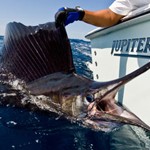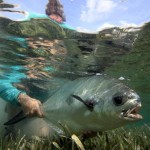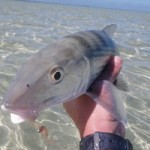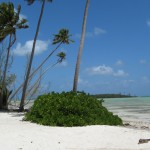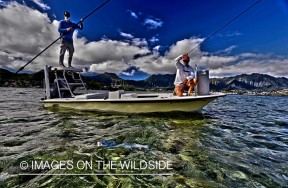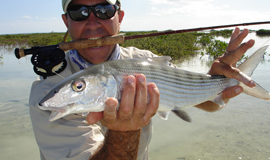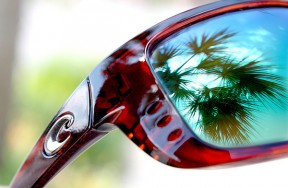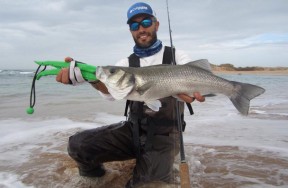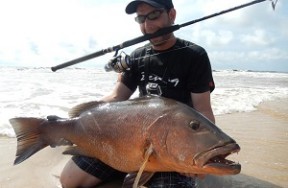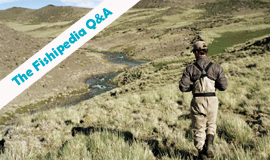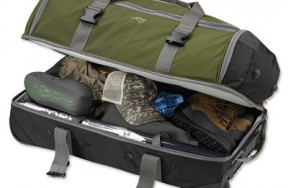The Fishipedia Q&A: Peter Morse

Just in case you haven’t heard of Peter Morse, the CV goes a little something like this: fly-fisherman, photographer, journalist, TV presenter (of Australian show “Wildfish”), pioneering South Pacific guide, Sage ambassador and FFF Master Casting Instructor. In one or all of those capacities, he has explored and fished the outer reaches of the Australian continent, amassing a knowledge of this sprawling wilderness that few could emulate. To coincide with the launch of his latest book, A Few Great Flies… and How to Fish Them, Mr Morse dropped into Farlows in London, to deliver a talk on his life in fishing. We were lucky enough to catch up with him for a quick chat…
Your job as a TV presenter, photographer and fishing writer has taken you to some incredible places. Have you got any particular favourites?
Lots – the South Island of New Zealand is pretty special. Weipa on Cape York has long been a favorite, Exmouth in Western Australia is right up there and also the wonderful monster bonefish of New Caledonia are very hard to beat.
Listening to you speak about your favorite fisheries in Australia, one can’t help being struck by the sheer scale of the place. Can you put that into some sort of perspective?
Australia’s coastline is approximately 33,000 kilometres long. The top half of the continent – let’s take a line from the Tropic of Capricorn north from the Coral Sea around the top to the Indian Ocean – comprises around half of that coastline but has a population of less than a million people. It’s a big empty coastline that varies from rainforest through mangrove swamps and deserts.
For most of our readers, the only problem with Australia is how far away it is and the limitless options once you get there. If you were to suggest one single trip to our readers, what would it be?
The self-guided option for a traveller is a difficult one. You do need a boat for much of this fishing, but Google Earth can be a huge help for finding places that can be shore fished. Crocodiles are very real. The Western Australian coast has a lot of great places for shore-based fly-fishing and you can DIY here, but it’s all desert.
There are two lodges and guiding operations I can recommend, and these are Alan Philliskirk’s operation out of Weipa in Queensland and the Arnhemland Barramundi Nature Lodge in the Northern Territory. Both offer something a little different.
What changes have you seen to Australia’s fisheries since you first picked up a fly rod?
Some better management, it’s actually in pretty good shape. We have also learned a great deal about a lot of new fisheries and how to exploit them better. The flats have become a fly-fishing zone whereas once they were just another navigation hazard.
You’ve been fortunate enough to fish some incredibly wild and remote places. What’s the strangest thing you’ve ever seen out there?
Nothing really stands out – there’s a lot of strange and wonderful things in the jungles of New Guinea, mostly human. Sperm whales are pretty amazing, as are manta rays and killer whales and whale sharks. A big bloom of bioluminescence still has me awestruck, the marlin that ate every teaser we had in the water including an entire daisy chain of squid and then ate my fly was pretty wild.
One of the fish you spoke about that really captured people’s imagination was the New Guinea black bass. For the uninitiated, can you outline just what makes this such an incredible adversary?
They live in very tight cover such as fallen rainforest trees and when you hook them they head straight for this cover. They take the fly heading back into the cover so there’s no opportunity turn them. They grow very large and are immensely powerful, more powerful than most can even begin to imagine because most of us have nothing that comes remotely close to draw a comparison with.
The other fish we have to talk about (your favourite, I believe) is the barramundi. Why is this species so important to Australian fishing?
They are very well managed and are in very good numbers. They are found in a very wide range of habitats and require some working out most of the time. They demand good casting skills, good fly manipulation and good angling skills for you to consistently catch them. They are also just a beautiful looking fish.
Most of us have a story about the one that got away; the near miss that still haunts us. What’s yours?
A 200lb striped marlin I had almost to the boat before it sounded and I eventually had to break it off as we were 30 miles offshore, getting on to dark with a howling north-easterly in an 18-foot boat. Haven’t been close to one since.
Can you tell us a little bit about your new book?
It’s called A Few Great Flies… and How to Fish Them. It’s not a fly-tying manual although my favorite saltwater flies are in there. It’s mostly about what I call the FDR principle; Fly, Depth and Retrieve. Too much emphasis is placed on fly selection and not enough on the depth we fish it at and how we retrieve that fly. We can sometimes get away with two of the three, so the wrong fly fished the right way at the right depth can become the right fly and so on. We need to get two of the three in place for success but all three is better, the right fly, fished at the right depth with the right retrieve.
You’ve got one day left to fish. Where would you go and what would you fish for?
Bonefish, Boat Pass, New Caledonia.
 >>To find out more about Peter,
>>To find out more about Peter,
watch his videos or buy his books,
click here to visit his official site




